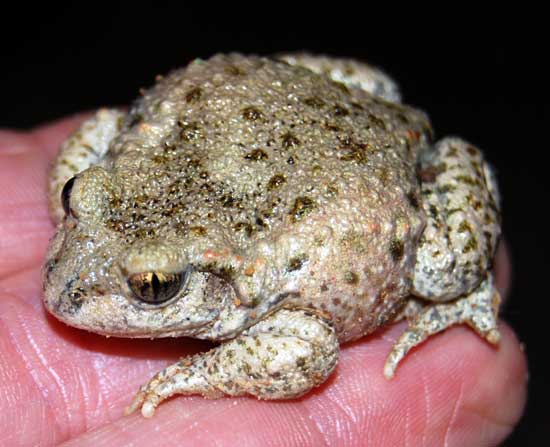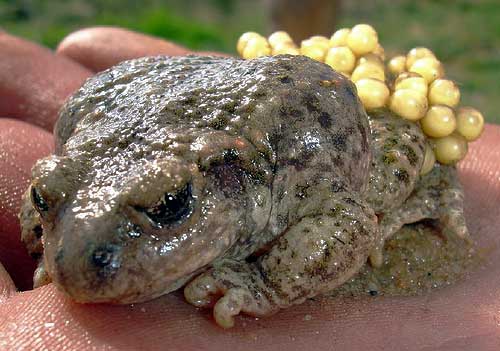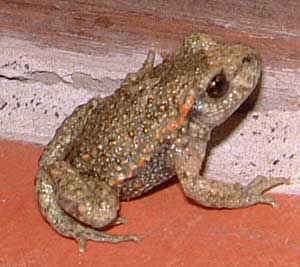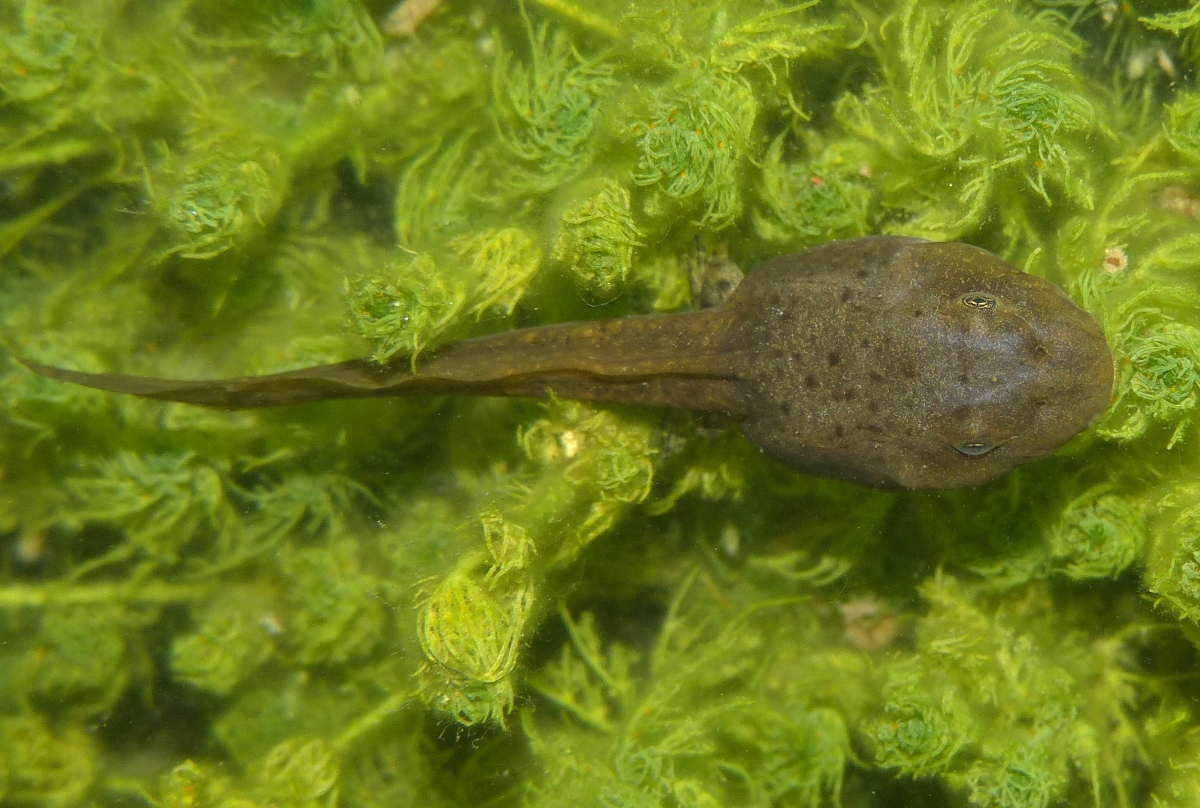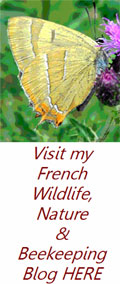Midwife toad
Alytes obstetricans
Alyte or Crapaud accoucheur
This is a small toad which doesn't grow to more than 5cm and can be found in all regions of France except the north east. They have a large flattened head with a rounded nose, prominent eyes with vertical lozenge shaped pupils. Their toes are long, smooth underneath and web less. The back is usually a drab grey or brown occasionally spotted with dark green, ventral surface is whitish with grey spots. Their call can resemble that of a Scops Owl Otus scops, a sort of persistent pew and this often causes confusion when there are only a few present. Where populations are concentrated there should be no confusion possible. It is difficult to tell the difference between the sexes although females will sometimes have red or orange spotting on the flanks running back from the eyes and males have longer rear legs than females.
They are generally to be found in woodland, under rock piles, in stone walls, under old tree stumps or wood piles and heaps of sand that is being used for construction work. Although they can be found at altitudes of up to 2000 metres they are more usually a creature of the plains and valleys with populations often concentrated near rivers. They are gregarious, mostly nocturnal and their prey is made up of worms, small slugs, various insects and insect eggs etc. They take refuge in humid holes, old wells and similar places in times of excessive heat or drought. Hibernation takes place from October until March depending on temperatures
Coupling takes place at night and on land between April and August. The male approaches a female that has signified her readiness to mate, then having positioned himself he proceeds to give her a rapid friction massage with his feet with up to 2000 strokes, at the same time violently compressing her flanks. This causes the female to lay her eggs, up to 100, between the males legs where he fertilises them, he then proceeds to carry them around with him stuck to his legs and rear end, bathing them regularly every evening for anything between three and eight weeks until at one of these baths the tadpoles take to the water to continue their development. Of course this is another way of sexing because if you see one carrying eggs - its a male!
Once the tadpoles enter the water the metamorphosis can either occur before winter (2 to 5 months after hatching) or after wintering (9 to 15 months later). Tadpoles are large and have a better survival rate than many other amphibians.
In France they are considered vulnerable / endangered and in decline due to the removal of the places they use for depositing their larvae, principally small ponds and pools as well as excessive ditch clearing at the wrong times of year. Fully protected species.
